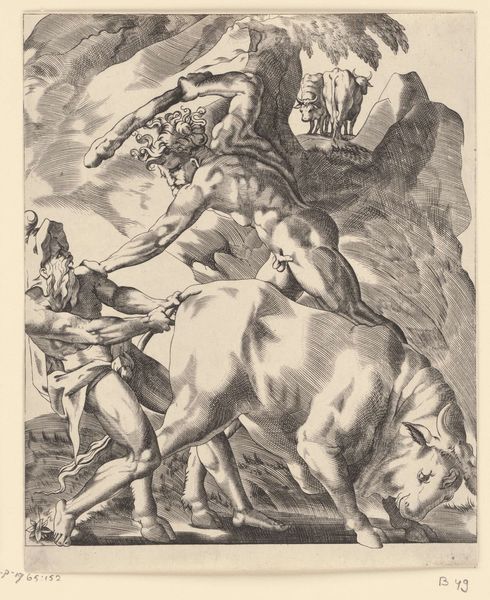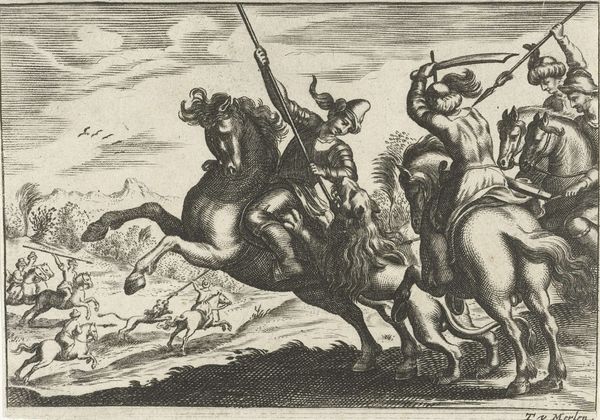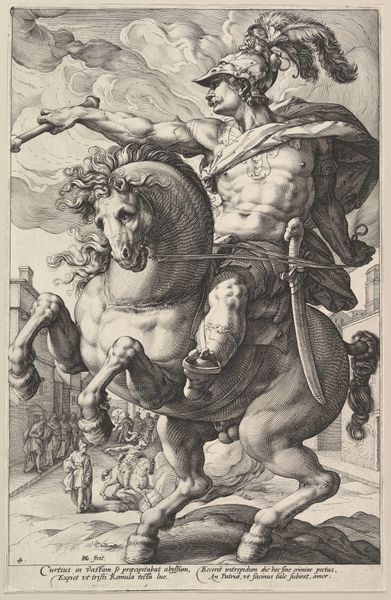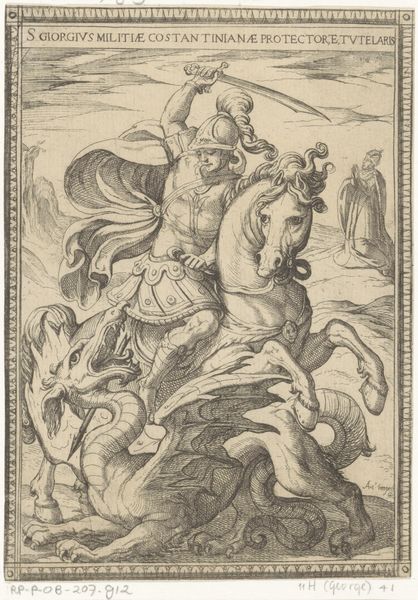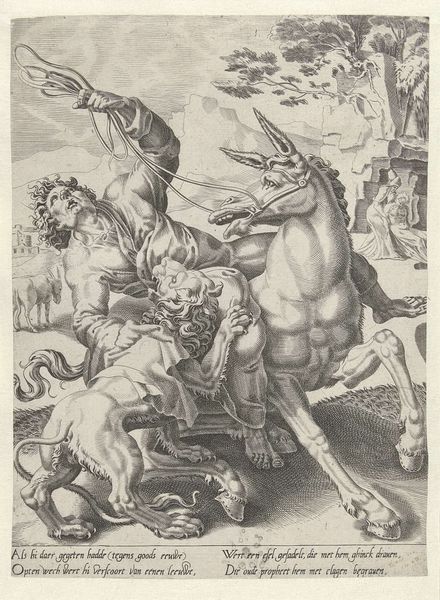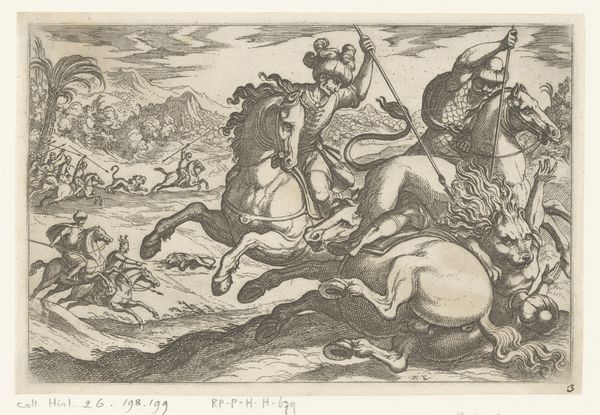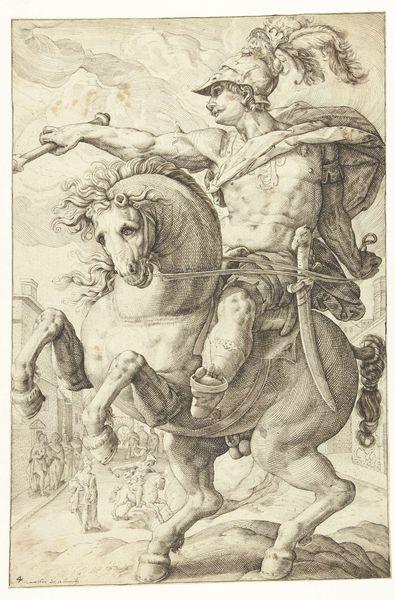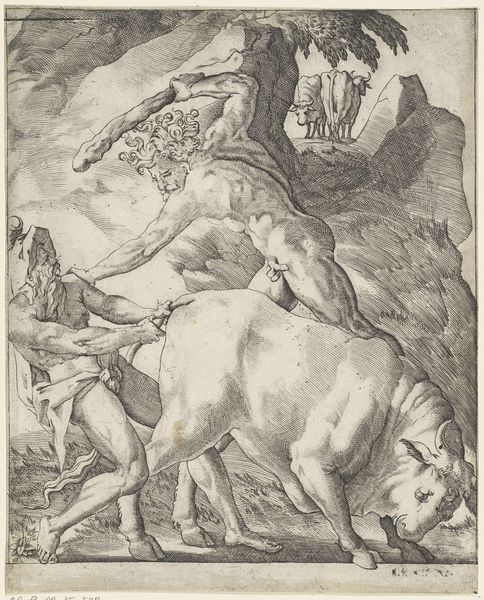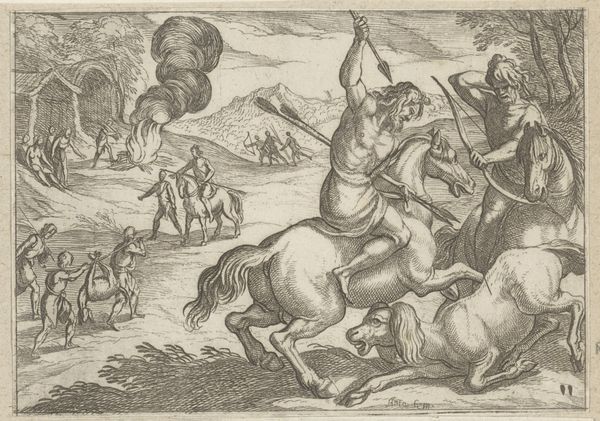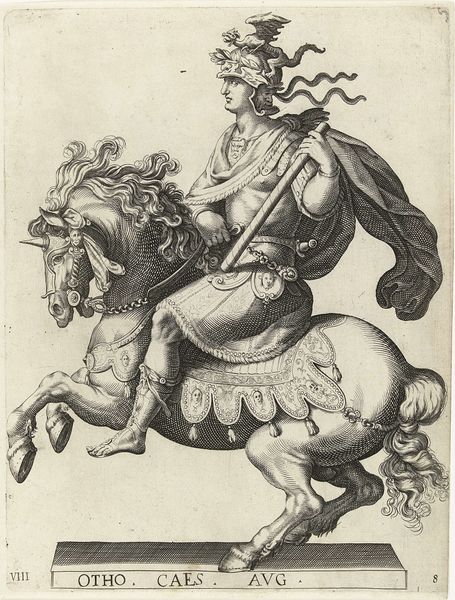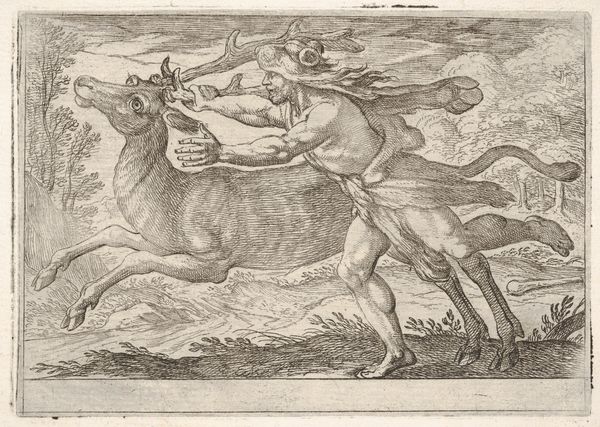
print, engraving
#
allegory
# print
#
landscape
#
mannerism
#
figuration
#
history-painting
#
engraving
Dimensions: height 265 mm, width 204 mm
Copyright: Rijks Museum: Open Domain
Curator: Looking at this print, made by Cornelis Cort in 1565, we see his "Pluto Abducting Proserpina into the Underworld". Editor: It's striking. The intensity is almost overwhelming. You can practically feel the frantic energy radiating from the horses, and that dominating figure of Pluto is a bit terrifying. Curator: Indeed, the Mannerist style truly lends itself to the drama of the scene. Cort was known for his engravings after works by other artists; here, it's said he adapted a design of Italian painter Taddeo Zuccari, popular in artistic circles during the time. Editor: The use of the landscape, which adds to the freneticism, almost serves to highlight the vulnerability of Proserpina in that moment of abduction. It forces us to contemplate the power dynamics at play and the patriarchal narratives underpinning them. The underworld becomes a space of confinement. Curator: Yes, themes such as abduction were highly prevalent during this era in European art. As an allegorical print, it’s intended not just as a depiction of a mythological scene, but also a moralizing narrative, very much in line with the didactic function that art fulfilled at the time. Editor: But morality as defined then—or any era, for that matter— is far from monolithic. The flames seem to act as a harsh backdrop, casting harsh shadows on Pluto. It asks us to contemplate whose narratives get validated by the cultural institutions which carry such artworks. How did these historical visual frameworks solidify social control and shape views about gender? Curator: The fact that Cort's print resides in the Rijksmuseum is a testament to its continued art historical relevance. It tells us much about printmaking during this era and dissemination of art at the time. Editor: It is indeed an object of significance to be encountered today and a grim reminder of narratives we should question, challenge, and work to change. Curator: Exactly. Hopefully, discussions such as this, triggered by the observation of art, continue to fuel our understanding of its role. Editor: Couldn't agree more.
Comments
No comments
Be the first to comment and join the conversation on the ultimate creative platform.
